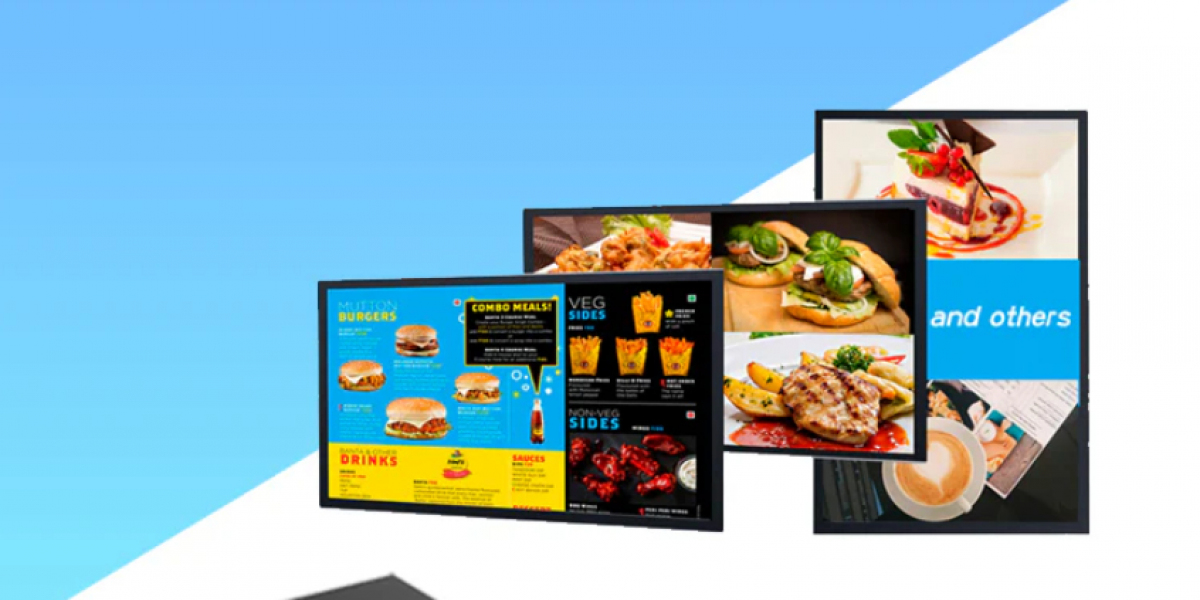In today’s fast-paced digital world, businesses are constantly seeking innovative ways to engage customers, streamline communication, and maximize their visual impact. One powerful solution lies in multi-screen digital signage, a system that allows content to be displayed seamlessly across multiple screens. At the heart of this system is the digital signage player. Choosing the best player can mean the difference between glitchy, fragmented displays and a high-performing, synchronized visual experience.
Here’s how the best digital signage players are engineered to support multiple screens with ease, transforming your signage strategy into a scalable, future-ready success.
Multi-Screen Digital Signage: Why It Matters
Multi-screen signage setups are increasingly popular in retail stores, corporate lobbies, transportation hubs, restaurants, and entertainment venues. These configurations are used to create immersive video walls, synchronized messaging across multiple areas, or tailored content per screen.
Whether your goal is to boost brand visibility, enhance customer experience, or drive sales through attention-grabbing visuals, a reliable digital signage player that supports multiple screens is essential.
Core Features That Enable Multi-Screen Functionality
Not all digital signage players are created equal. To support multiple screens effortlessly, the best players incorporate specific capabilities:
Multi-Output Support
High-quality players come with multiple HDMI or DisplayPort outputs, enabling connection to two, four, or even more screens from a single device. This eliminates the need for multiple individual players and simplifies content management.
4K and UHD Video Capability
For businesses aiming to impress with vivid, high-resolution visuals, multi-screen support must include 4K or Ultra HD compatibility. The best players handle high-resolution media across all outputs simultaneously without lag or degradation in quality.
Video Wall Synchronization
Advanced players ensure frame-accurate synchronization, which is crucial for video wall applications. This prevents issues like screen tearing, mismatched content timing, or playback jitter across screens.
Multi-Zone and Multi-Screen Layouts
Top-tier digital signage players enable custom screen zoning, splitting a single screen or multiple screens into sections that play different content. This allows for more dynamic, layered messaging across your signage network.
Software Integration and Content Management
Seamless multi-screen performance isn't just about hardware. The right player must integrate effortlessly with your content management system (CMS).
A robust CMS integration allows businesses to schedule and deploy content across multiple screens or screen zones with precision. Whether you're pushing synchronized video, local messages, or real-time data, the CMS and player must work hand-in-hand.
Cloud-based platforms offer remote access, centralized control, and real-time monitoring, all crucial for managing large multi-screen deployments efficiently.
Support for Extended Displays vs. Mirrored Displays
When choosing a player, understanding the difference between extended and mirrored displays is essential:
- Extended Display: Each screen shows different content or forms part of a larger visual.
- Mirrored Display: All screens display identical content simultaneously.
The best signage players allow both modes, giving you flexibility depending on your signage objectives. For example, mirrored content is ideal for consistent branding in multiple locations, while extended displays are perfect for storytelling or panoramic visual effects.
Hardware Specifications That Matter
To support multiple screens, a digital signage player must offer high-end hardware configurations, including:
- Powerful GPU: A dedicated graphics processing unit ensures smooth playback and synchronization across screens.
- Multi-Core CPU: Handles complex tasks such as rendering, buffering, and real-time data streaming without lag.
- Ample RAM: 4GB to 16GB or more is often required for managing several content streams simultaneously.
- SSD Storage: Fast read/write speeds for media assets, reducing buffering or loading issues during playback.
Many of the best multi-screen players use fanless, industrial-grade designs that run silently and reliably, even in demanding environments.
Flexible Mounting and Form Factors
Multi-screen deployments often require installation in compact or unusual spaces. Leading signage players are designed with flexible form factors — small enough to mount behind displays, within media cabinets, or integrated into kiosks. This design flexibility makes installation and maintenance significantly easier.
Real-World Applications of Multi-Screen Signage Players
Here are a few real-world use cases where the best digital signage players prove their worth:
- Retail Stores: A synchronized window display across five screens to showcase seasonal promotions in real time.
- Airports and Transport Hubs: Multiple information screens displaying synchronized departure times, weather, and ads from one player.
- Restaurants: Menu boards across three screens, where each screen displays a different category of food, beverages, and promotions, all managed from one dashboard.
- Exhibitions and Events: Video walls that create immersive brand experiences through ultra-wide videos or interactive touchpoints.
Remote Monitoring and Diagnostics
When deploying multi-screen setups, especially across different locations, remote monitoring becomes essential. The best digital signage players come with built-in diagnostic tools and remote management features that allow:
- Real-time status updates
- Automatic alerts for errors or playback issues
- Remote reboots or firmware updates
- Performance analytics for each screen
These tools reduce downtime and eliminate the need for on-site troubleshooting, saving both time and operational costs.
Future-Proofing Your Digital Signage Network
As your business grows, so will your signage needs. Investing in a multi-screen-capable signage player now allows for future scalability without major reinvestments.
The best players are designed to evolve through software updates, new CMS features, and modular expansions. Choose a vendor that supports ongoing development and offers long-term support for its hardware solutions.
Conclusion
A high-performance digital signage player that supports multiple screens is the backbone of any successful, modern signage strategy. From synchronizing stunning visuals to powering diverse content across zones, the right player delivers seamless performance, flexibility, and reliability.
Make your decision based on the number of screens, content complexity, compatibility with your CMS, and the player’s performance capabilities. With the right investment, your business can create impactful, engaging, and scalable digital experiences that stand out in any environment.


